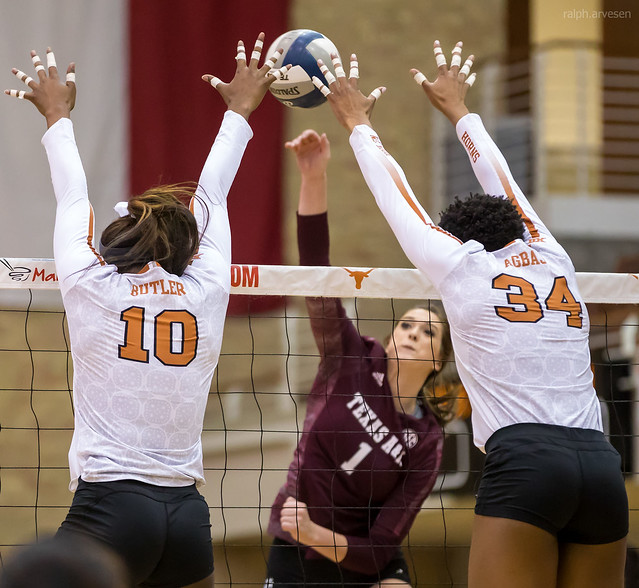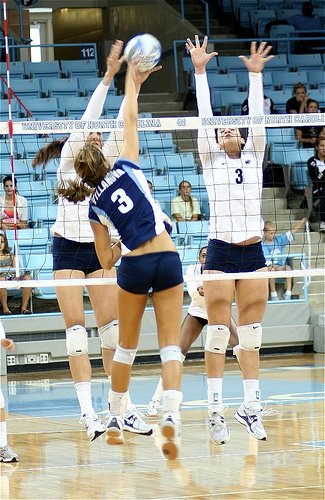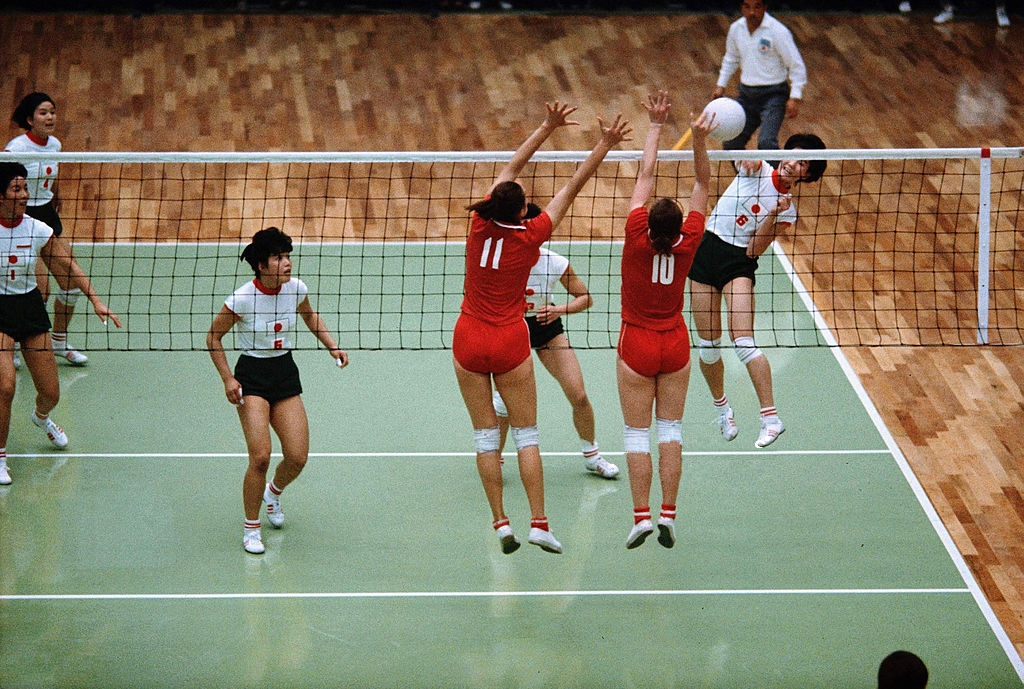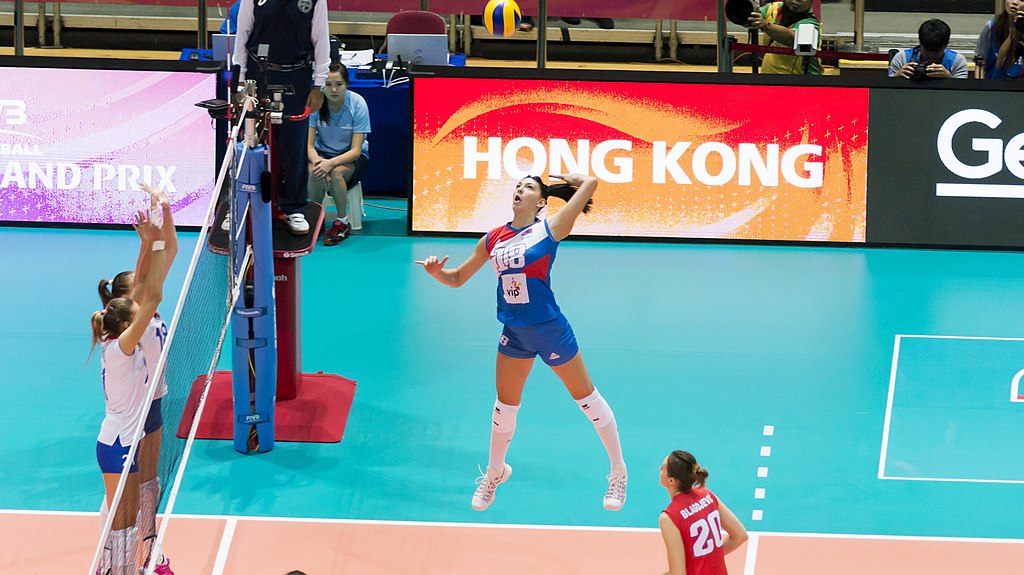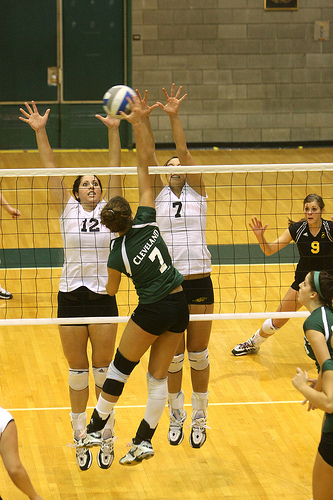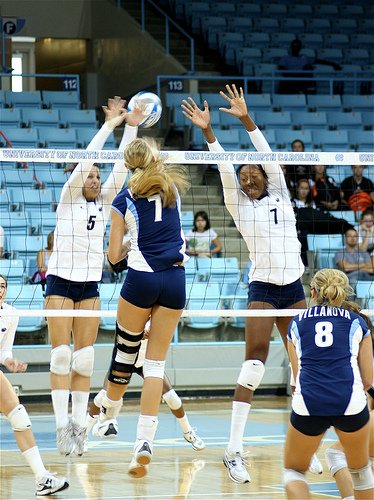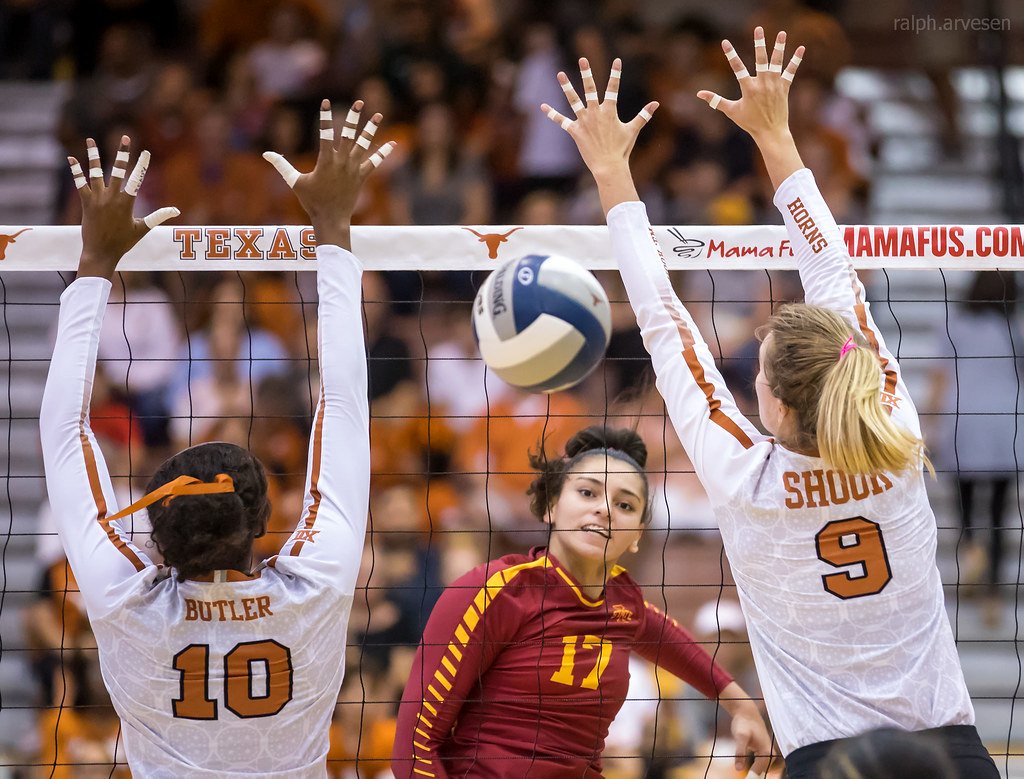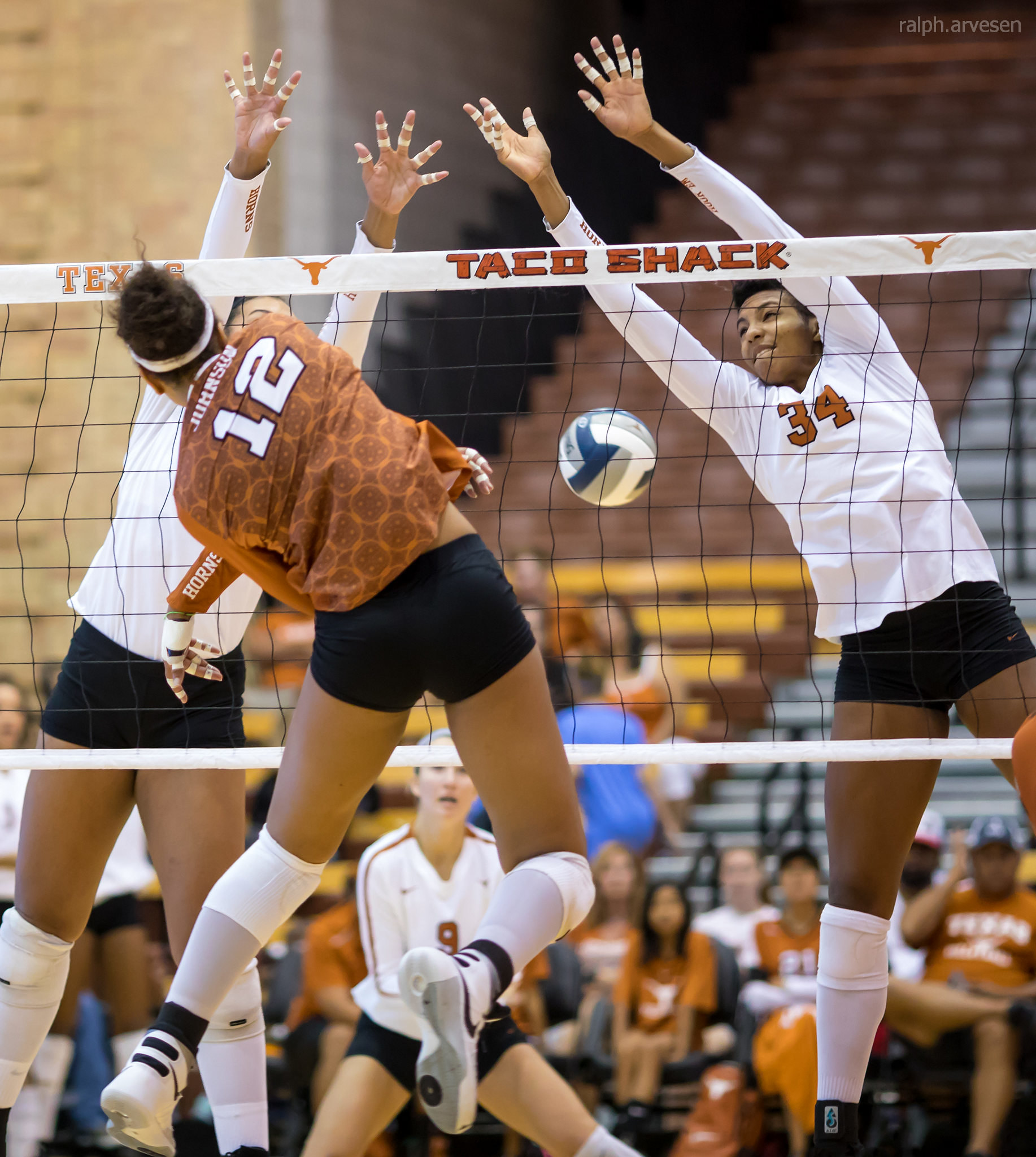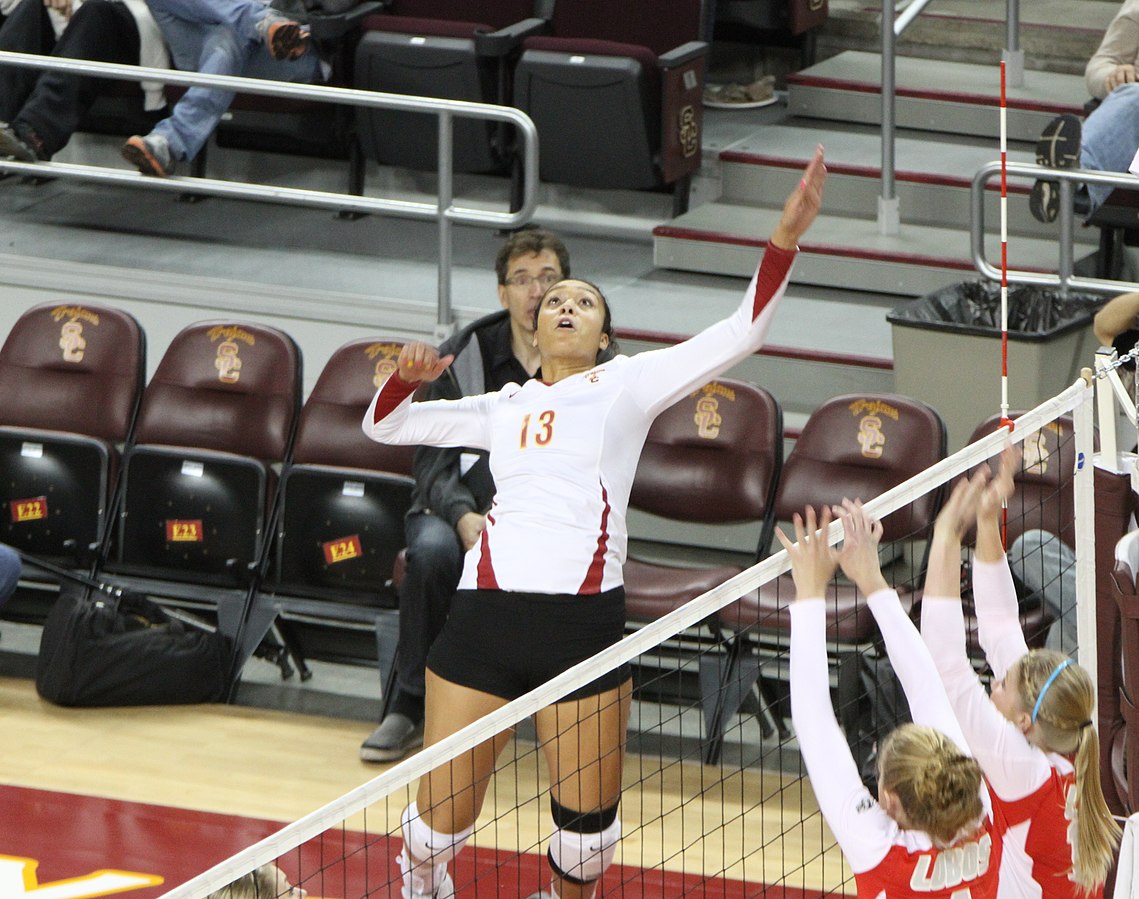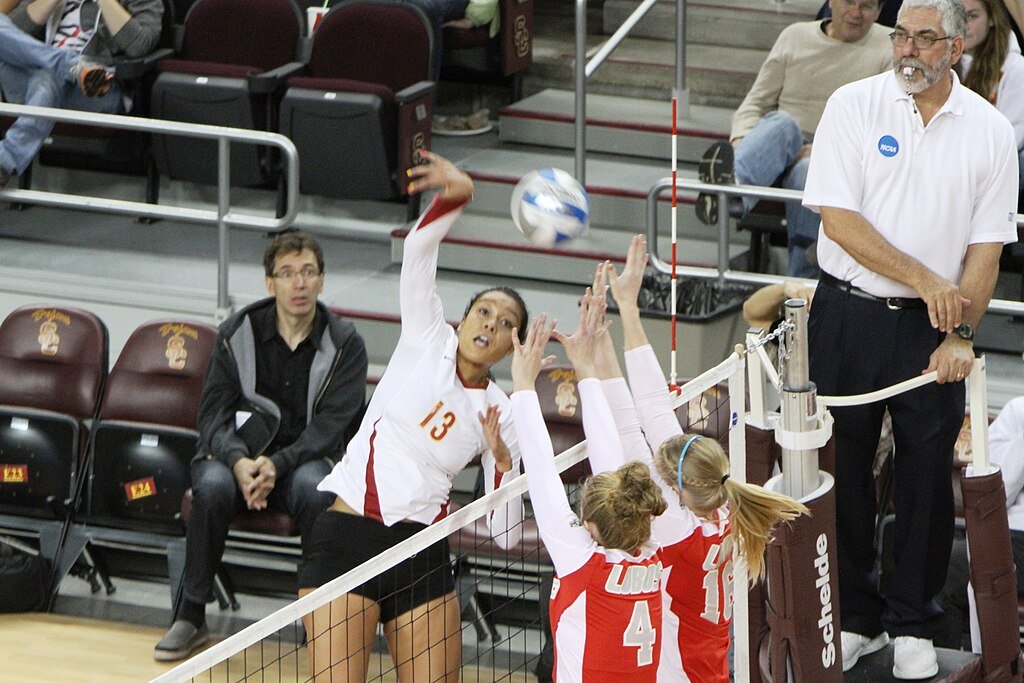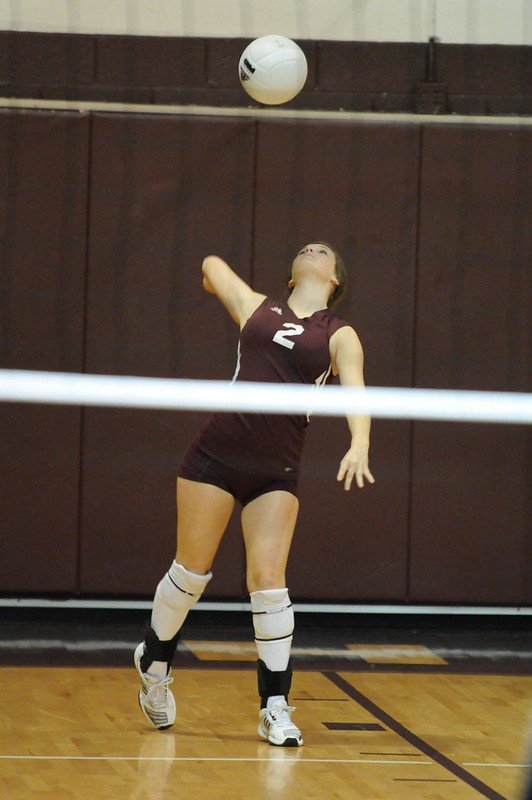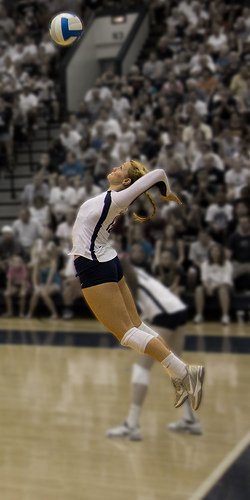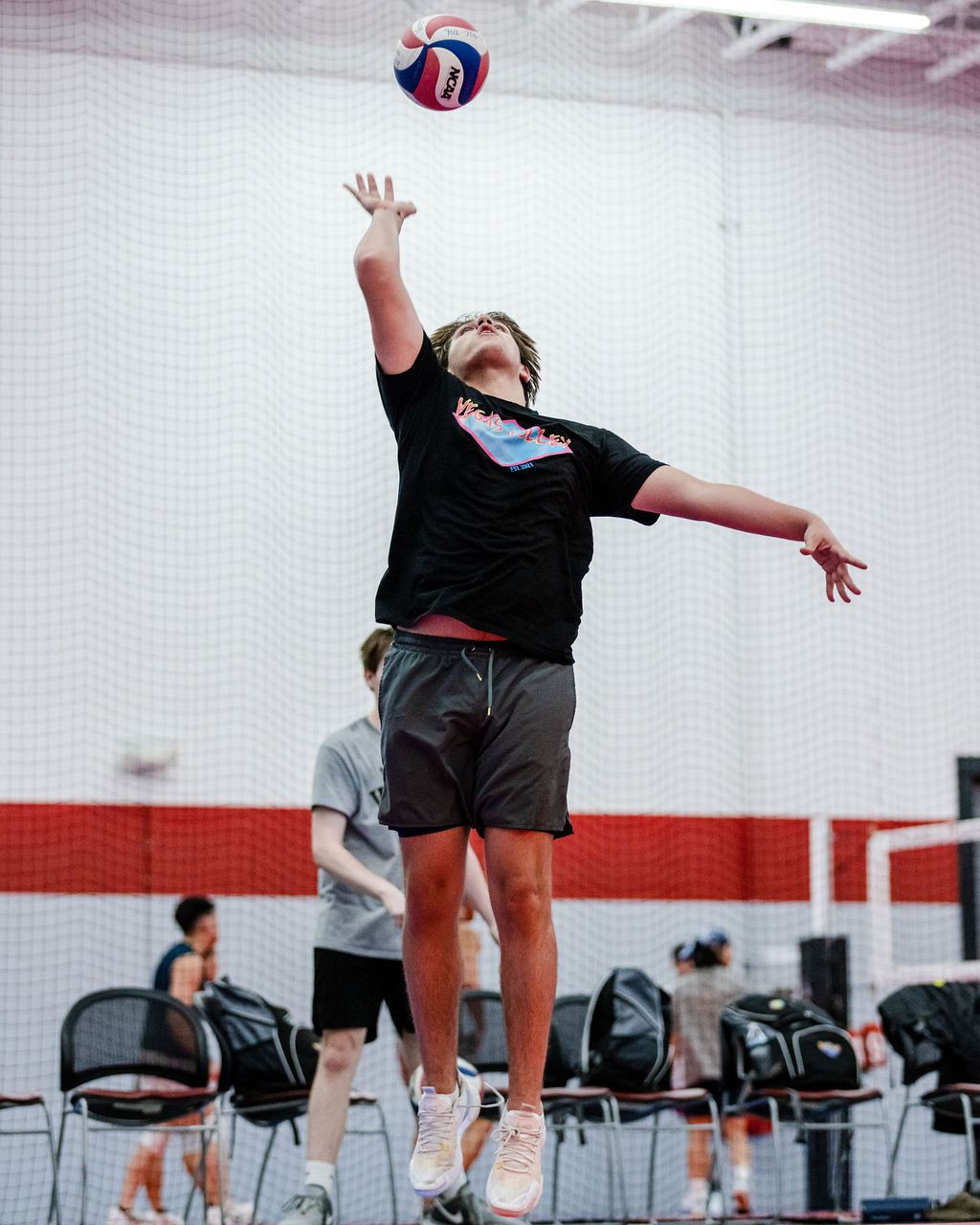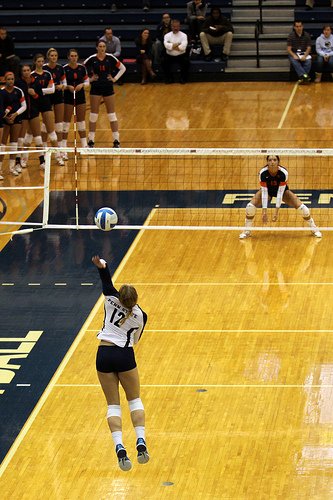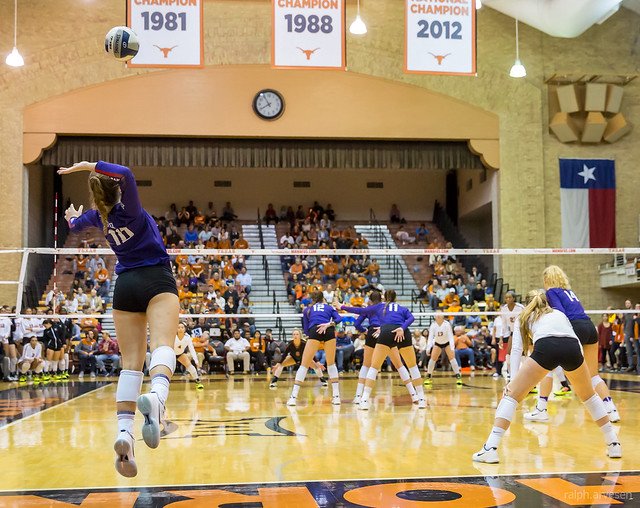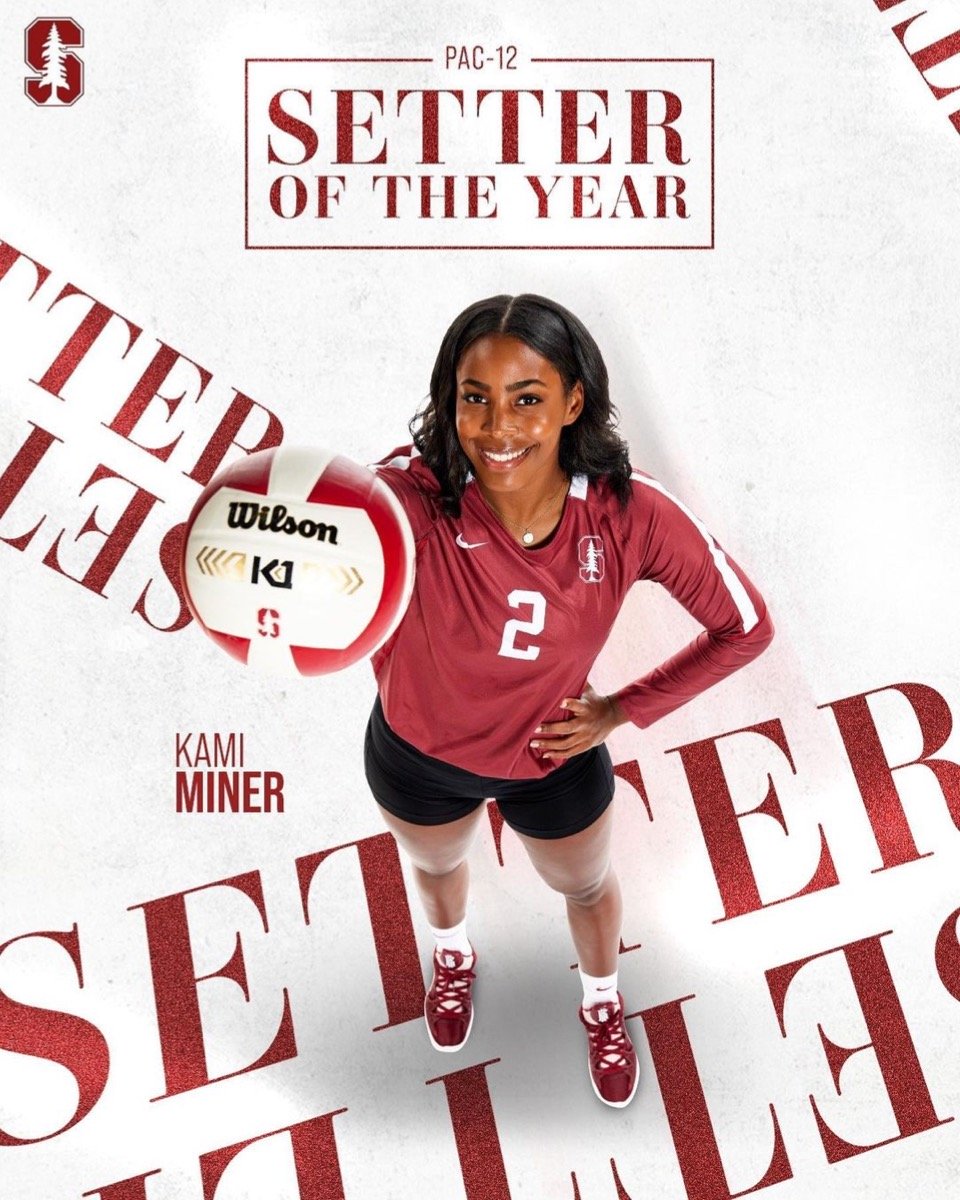- Improve Your Volleyball with Coach April
- High School Varsity Volleyball
- Hitter in Volleyball
 Dear Volleyball Mom,
Do You Know What Sets My Private Volleyball Training Apart From Anyone In Vegas?
I invite You to read what my private volleyball training mission says before considering hiring me as a private volleyball coach because I'm not available for everyone.
Dear Volleyball Mom,
Do You Know What Sets My Private Volleyball Training Apart From Anyone In Vegas?
I invite You to read what my private volleyball training mission says before considering hiring me as a private volleyball coach because I'm not available for everyone.Essential Skills for a Hitter in Volleyball: Tips For Short Attackers
A short hitter in volleyball can aim the ball for the seam of the block to score since its harder for defenders to block at the net or dig up in the back row.
Volleyball is a game of strategy, precision, and effective teamwork.
One important part of a successful team is the hitter, and budding athletes especially short hitters, need to master crucial volleyball hitting techniques to stand out on the court.
A valuable spiking technique is aiming the ball for the seam of the block.
This tactic becomes a potent tool when smartly exercised by a short hitter in volleyball.
The seam refers to the area between the outside blocker's hands and the middle blocker's hands.
The idea behind aiming for the seam is that this area can be challenging for defenders both to block at the net and to dig up in the back row.
A common practice among these is to test the defense by continuing to hit at the seam until the block is closed, or your shots have been successfully dug once or twice.
A hole in the block, which sometimes appears when the middle blocker and outside blocker do not form a solid block together, can be exploited for scoring points until the opposing team rectifies their formation.
Even teams that use swing blocking often leave this hole in the block intentionally, designating a libero to guard the area.
But remember, it's not an easy hit to dig, providing an opportunity for the attacking team to score.
However, teams adapt, and strategies must evolve with the game. If the opposing team manages to close the block, you must shift your approach.
Quick thinking and flexibility are fundamental virtues of a good hitter. You might need to consider other tactics such as hitting around the block or targeting the top of the blockers' hands.
Volleyball, in many ways, resembles a grand game of chess. Each move from your side should incite a reaction from your opponent, which, in turn, opens up opportunities for your next move to score points.
Always remember: persistence is key.
Maintain an aggressive, yet adaptive playing style. Keep doing what works, repeatedly scoring points until it doesn't work anymore.
When a tactic fails, be prepared to move on and try different volleyball hitting techniques that may break the opponent's defense.
Mastering these techniques and strategies will give you a competitive edge on the volleyball court.
Your journey to becoming an exceptional hitter in volleyball starts today.
Keep training, stay agile, and never stop learning.
As with any sport, continuous practice and dedication are the keys to success and improvement.
A short hitter in volleyball can aim the ball for the seam of the block to score since its harder for defenders to block at the net or dig up in the back row.
Aim for the seam when the middle blocker and outside blocker do not go up and form a solid block together.
The seam is the area between the outside blocker's hands and the middle blocker's hands.
It's that space they're supposed to close when they block together at the net.
That's a "hole in the block" that you need to be comfortable hitting at because there's a good chance there's no one defending that space in the backrow.
If they don't then that's an easy play for you to make.
Alot of teams that swing block leave that hole in the block on purpose and have a libero cover that area but its not an easy hit to dig.
A smart hitter in volleyball should test the defense. Hit at the seam until the block closes it or until you've been dug once or twice. (Ralph Arvesen)
So test the defense.
Hit at the seam until the block closes it or until you've been dug once or twice.
Many times you'll find that you score more points doing this than if you didn't try it.
USA High Performance, Coronado High School, State Champion Finalist Left Side Hitter Jacob Ceci
Slo Motion Armswing Hitting Technique
Keep doing what works..until it doesn't work anymore.
Then move on to try another tactic like hitting around the block or hitting the top of the blockers hands.
Training Tips For A Successful Hitter in Volleyball
Below, I share some training tips designed to enhance your capabilities as a hitter in volleyball:
Hitter In Volleyball
Work on Your Timing
Timing is crucial in volleyball.
Engaging in hitting timing exercises during training can dramatically improve your hitting skills.
Hitter In Volleyball
Polish Your Approach
Practicing with a setter can significantly improve your timing and coordination.
Hitter In Volleyball
Strengthen Your Core
Your core plays a pivotal role in hitting mechanics, affecting both your power and stability.
Include exercises like planks or Russian twists to your training regimen, focusing on strengthening your core muscles.
Hitter In Volleyball
Jump Training
Jump training (Plyometrics) enhances your explosiveness, enabling you to reach higher at the net.
Squat jumps, tuck jumps, box jumps, and frog jumps are excellent plyometric exercises for volleyball players.
Different Hitting Strategies and Positions For A Hitter In Volleyball
The game of volleyball hosts a variety of positions each with varying roles, and for hitters, strategies can differ significantly based on their position:
The Outside Hitter In Volleyball
As an outside hitter, you face the most blocks since it's an easier position for the opposing team to reach.
The Middle Hitter in Volleyball
A middle hitter often performs quick attacks.
One effective strategy is to aim your hit between the opposing team's middle and outside hitters.
Off-speed shots can also throw off the opponent’s timing.
The Opposite Hitter In Volleyball
Befitting its name, the opposite hitter position mainly involves hitting from the right side.
While hitting cross-court shots, aim for the deep corner as it's usually the hardest area for defenders to cover.
The Backrow Hitter In Volleyball
Backrow hitters tend to use the pipe attack (hitting from the back row in the middle of the court).
The goal here is to hit high, deep, and aggressively towards the back third of the opposing team's court.
Remember, becoming a proficient hitter in volleyball requires patience, persistence, and continuous practice.
Keep open communication with your team, especially setters and liberos, and adjust your strategies based on what the game situation calls for.
Understanding and implementing these tips, strategies, and positions might be challenging at first, but with regular practice and determination, you'll see a notable improvement as a hitter on your team.
Do You Follow Me on Pinterest?
 Private or semiprivate volleyball indoor/sand lessons are an excellent way for young Las Vegas high school volleyball players to quickly improve their individual skills through a private or semi-private coaching experience.
These lessons are conducted by former pro volleyball player, former USA Volleyball High Performance instructor and Evaluator and Tstreet Vegas 18s head Coach April Chapple on a weekly basis.
Sign up now!
Private or semiprivate volleyball indoor/sand lessons are an excellent way for young Las Vegas high school volleyball players to quickly improve their individual skills through a private or semi-private coaching experience.
These lessons are conducted by former pro volleyball player, former USA Volleyball High Performance instructor and Evaluator and Tstreet Vegas 18s head Coach April Chapple on a weekly basis.
Sign up now!Follow me on Pinterest Volleybragswag to improve your game even faster!
I share alot of individual, partner and easy-to-do volleyball serving drills we do in class with my followers.
Many of these volleyball practice drills you can do at home by yourself or try at your next practice with your teammates.
If you're a B team or JV player trying to make varsity next year...your goal should be to complete 1000 reps a day of at least three of the basic skills on your own...volleyball passing, serving and setting should be at the top of the list.
Smart Tactics A Short Hitter in Volleyball Uses:
Where Do You Go Now?
Okay here's where you need to go now! There are three options:
- Learn more about Playing Volleyball by clicking the Related Links below. .
- Follow the suggested reading on our Sitemap page Learning How To Play (Sitemap)
- Or visit the pages in the How to Play Volleyball section in the drop down menu at the top of the page to get started.
- Before leaving this page Say "Hi" to Mr T.T. MUGB the Lion, wearing the #7 jersey below.
SUSCRIBE
To My Email Newsletter Below!
From Lady Vol to Legend: Coach April Produces Powerful Passionate Players...is that you?
What Are You Looking For?

Hi there!
Thanks for stopping by. Hope you learned something today that will help you reach your volleyball goals.
Be sure to subscribe to my email newsletter so you can learn more each week!
Stay strong! Stay motivated!
-Coach April

SUSCRIBE
to my email newsletter below!
Vegas Volleyball's Unsung Heroes: Celebrating Moms with Peace Love Volleyball Shirts
Ready to energize your volleyball mom journey?
Subscribe to my 'Producing Powerful Passionate Peaceful Players' email list above on ImproveYourVolley.com.
You'll receive energy-boosting tips, exclusive insights from me, Coach April Chapple on maintaining momentum in volleyball.
Let's power up the Vegas volleyball scene together!
Recent Articles
-
Frequently Asked Libero Volleyball Position Questions Answered
Apr 14, 25 08:10 PM
I answer the most frequently asked libero volleyball position questions many players and coaches ask that will help you learn about the player responsibilities. -
Coach April's Peace Love Volleyball Phrases For T-Shirts Honor Moms
Apr 13, 25 03:49 PM
Whether on the court or in everyday life, April Chapple's volleyball phrases for t-shirts are serving inspiration for players and moms, one message at a time. -
What Is A Setter In Volleyball? My Setting Guide With Answers To FAQs
Apr 13, 25 12:36 AM
Learn what a volleyball setter is from a champion coach. Get expert insights, training tips, and proven strategies for volleyball's most strategic position.
